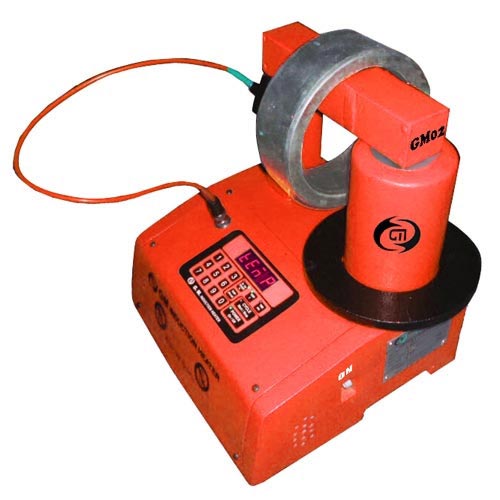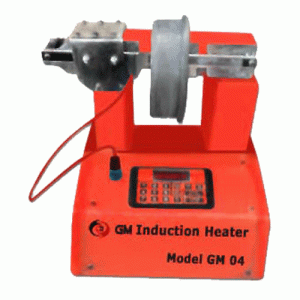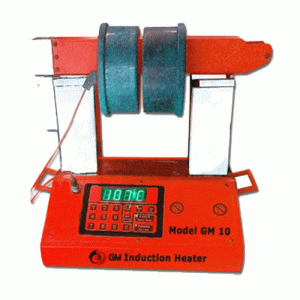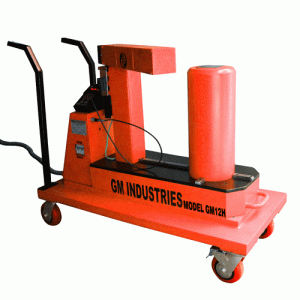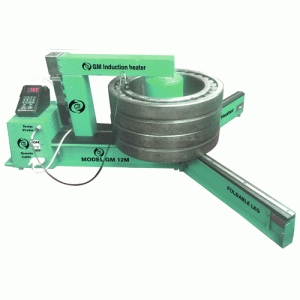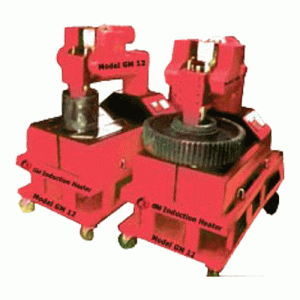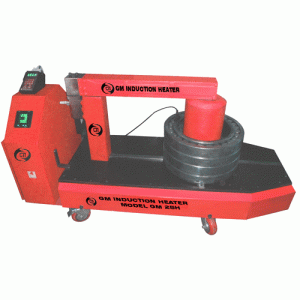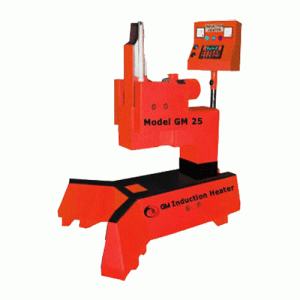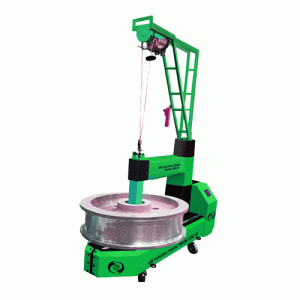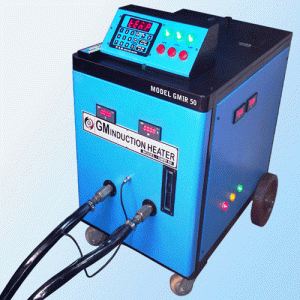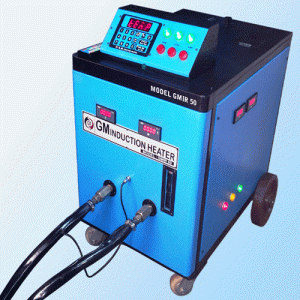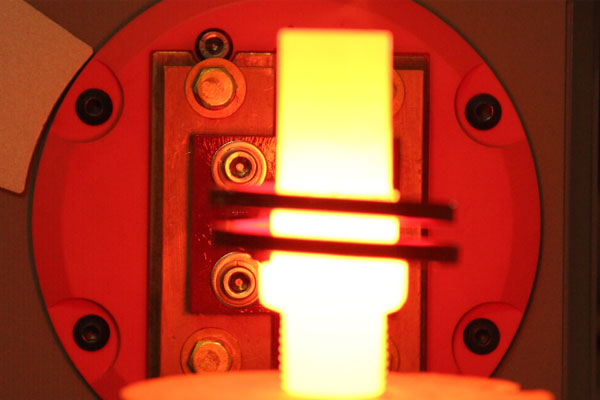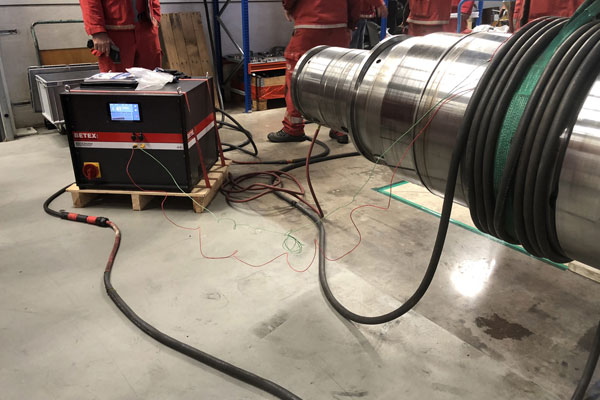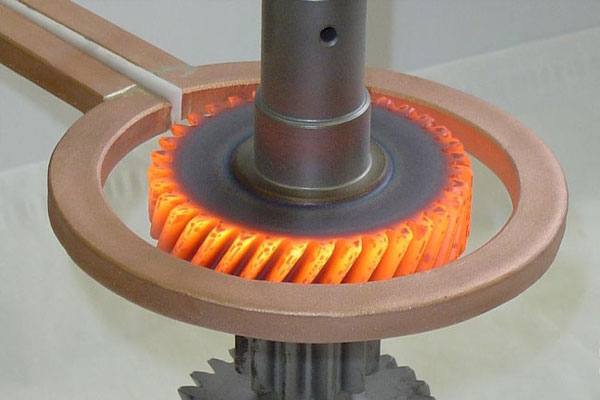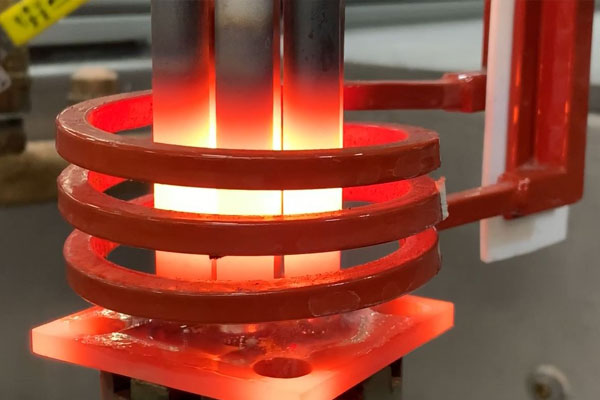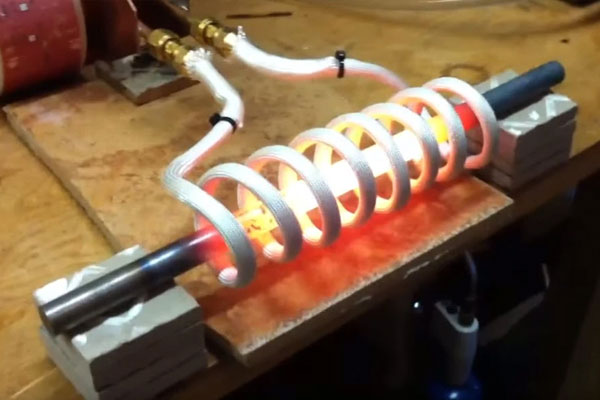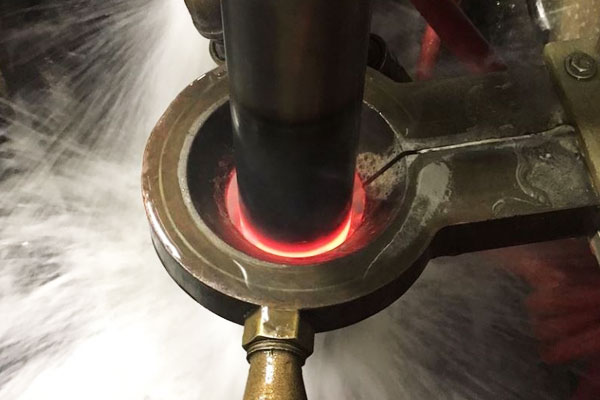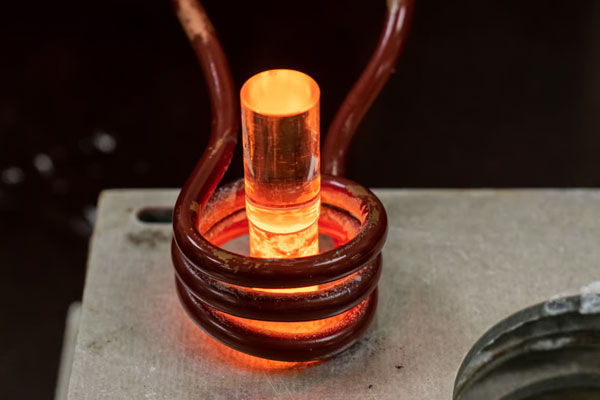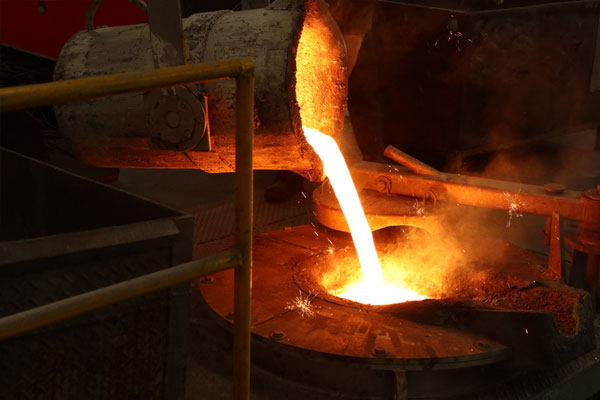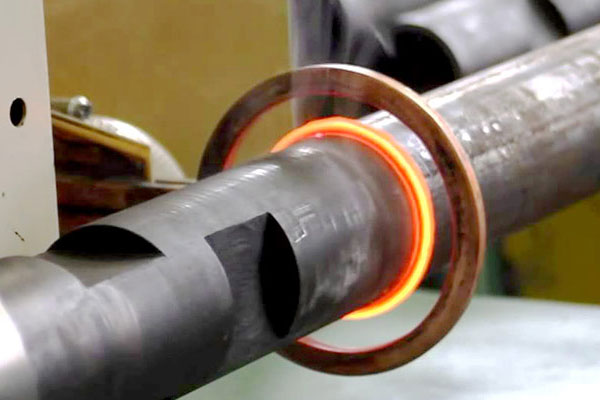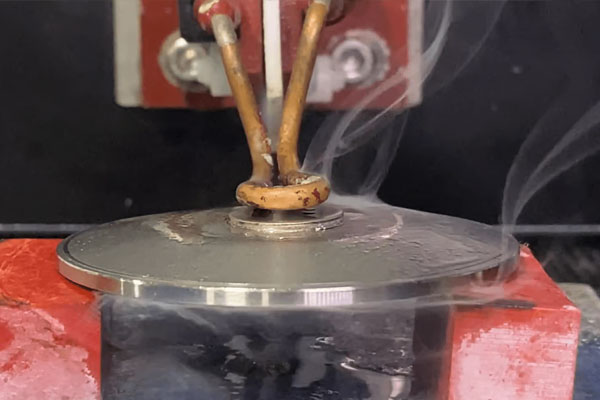Induction Heaters
What does Induction mean in heating?
Before we get started with Induction heaters let us understand what Induction means?
In the context of heating, induction refers to the process of using electromagnetic fields to generate heat within a conductive material. This process involves placing the conductive material within an alternating magnetic field, which causes electric currents to flow within the material. These electric currents, known as eddy currents, generate heat due to the resistance of the material to the flow of electricity.
Induction heating is a common technique used in industrial applications, such as in the manufacture of metal parts or in the processing of materials. It is also used in consumer appliances such as induction cooktops, where the heat is generated directly within the cooking vessel, rather than on a heating element beneath it, resulting in faster and more efficient heating. With the help of advanced technology and expertise in the field of industrial induction heating GM Industries offers a wide range of industrial induction heaters that can be customized to meet specific customer requirements for metal parts and materials processing.
What is Induction Heater?
An induction heater consists of an electronic oscillator and an electromagnet, which are used to produce a high-frequency AC that is directed through the electromagnet. The resulting magnetic field rapidly alternates, inducing eddy currents within the object being heated. These currents flow through the object’s resistance, resulting in Joule heating and the generation of heat. In materials that are ferromagnetic or ferrimagnetic, such as iron, heat is also generated through magnetic hysteresis losses. The frequency of the AC used in induction heating is determined by several factors, including the object’s size and material type, the coupling between the object and the work coil, and the penetration depth.
Industrial Induction Heater extends from standard warmth generators, through modified solutions for complete assembling process. This Induction Heating Machine is ideal for a wide scope of utilizations and is suitable for heating an extensive range of electrically conductive materials. Enlistment warming allows you to rapidly warm the object of your application while constraining defilement. The process depends on the prompted electrical flows inside the material to deliver heat. Induction Heater provides a solution for applications, such as induction heater for bearing, brazing, solidifying, preheat and post warming, shrivel fitting, strengthening, fastening and various others. Induction heating machine offers a controllable and restricted strategy for heat without any contact with the parts (segments) being warmed. The heater is manufactured by inciting a substituting attractive field into electrically conductive materials. GM industries is a prime Industrial induction heater supplier that offers a systematic scope of induction heater for industrial use.
Types of Industrial Induction Heaters Used in Fabrication Processes
Induction Heating Machine Price in India
| Product Range | Price |
| Induction Heater GM 02 | ₹ 5 Lakh/ Unit |
| Induction Heater GM 02 M (2.0 / 2.6 KVA) | ₹ 3 Lakh/ Unit |
| Induction Heater GM 04 (3.0/ 4.0 KVA) | ₹ 6 Lakh/ Unit |
| Induction Heater GM 04 M (3.6 /4.6 KVA) | ₹ 7 Lakh/ Unit |
| Induction Heater GM 10 (6.0 / 10.0 KVA) | ₹ 8 Lakh/ Unit |
For more information on any of our high quality products or getting accurate prices contact GM Industries at
Call Us
+(91)-9820533489 / 7738562224
Enquiry Form
Submit
How does induction heating work?
Industrial Induction Heater Working Principle: – Induction heating is a procedure of heating an electrically conducting object (metals or other conductive materials), through heat produced in the object by eddy currents. In short, Industrial Induction Heater is used to bond, harden or soften metals. So, how exactly does induction heating work? In a basic induction heating arrangement, a solid state radio frequency power supply sends an AC current through an inductor (often a copper coil), and the segment that needs to be heated (the workpiece) will be placed inside the inductor. The inductor primarily serves as the transformer, and then the segment that needs to be heated therefore becomes a short circuit secondary. When a metal part is placed inside the induction heating coil and enters into the magnetic field, inside the part, the circulating eddy currents will be induced. These eddy currents produce accurate and localized heat without any direct contact between the part and the inductor.
Types of Industrial Induction Heater
Low-frequency Induction Heaters
This type of induction heater operates at lower frequencies than high-frequency induction heaters. Low-frequency induction heaters typically use frequencies in the range of a few hundred hertz to several kilohertz, whereas high-frequency induction heaters use frequencies in the range of tens to hundreds of kilohertz. Low-frequency induction heaters are commonly used for heating large and thick metal parts, such as those used in forging and heat treating applications. They can also be used for melting and casting metals, as well as for heating metal pipes and tubes and for dismounting bearings, gears, and other components from shafts. One advantage of low-frequency induction heaters is that they can penetrate deeper into the material being heated, allowing for more even heating throughout the part. However, they are less efficient than high-frequency induction heaters, and may require more power to achieve the same level of heating.
Medium-frequency induction heaters
Medium-frequency induction heaters are a type of Industrial induction heating system that operate at frequencies between high and low-frequency ranges. These heaters typically use frequencies in the range of a few kilohertz to several tens of kilohertz. Medium-frequency induction heaters are commonly used for a wide range of industrial applications, including heating and forging of steel, heat treating, melting and casting of metals, and induction brazing and soldering. They can also be used for surface hardening of metals, induction annealing of metals and for mounting heavy-duty bearings or gearboxes. One advantage of medium-frequency induction heaters is their ability to achieve rapid and uniform heating of large and complex-shaped metal parts, while still being relatively energy-efficient compared to low-frequency induction heaters. They also offer better control over the heating process, allowing for precise temperature and time control. However, they may require more sophisticated and expensive power supplies and control systems compared to low-frequency induction heaters.
High-frequency induction heaters
This type of induction heater operates at high frequencies, typically in the range of tens to hundreds of kilohertz. These heaters are commonly used for a wide range of industrial applications, including heating and welding of small and medium-sized parts, brazing, annealing, and hardening of metals, surface hardening of metals and mounting of bearings or gears. One advantage of high-frequency induction heaters is their ability to heat small and thin parts quickly and efficiently, with precise control over the heating process. They are also relatively compact, easy to use, and require less energy than low-frequency induction heaters.
Magnetic induction heaters
Magnetic induction heaters are a type of heating system that uses electromagnetic induction to generate heat directly within a metal object. The heating process is achieved by creating a magnetic field that penetrates the metal object, which then induces electrical currents within the object, causing it to heat up. The principle behind magnetic induction heating is based on the fact that when an alternating current is passed through a coil of wire, it generates a magnetic field around it. When a conductive material, such as a metal object, is placed within this magnetic field, the magnetic field induces electrical currents within the material, which in turn generate heat. Magnetic induction heating is highly efficient and precise, as it allows for the precise control of the heating process and minimizes heat loss to the surrounding environment. This makes it an ideal choice for a range of industrial and commercial applications, such as heating metals for forging and casting, cooking, and sterilization processes. It is also becoming increasingly popular as an eco-friendly and energy-efficient alternative to traditional heating systems.
Eddy current Induction heaters
This type of induction heaters uses the phenomenon of eddy currents to heat conductive materials. An eddy current induction heater consists of a work coil through which a high-frequency alternating current (AC) is passed, producing a rapidly changing magnetic field. When a conductive material is placed inside or near the coil, the magnetic field induces eddy currents within the material. These eddy currents generate heat within the material, resulting in the material being heated. Eddy current induction heaters are commonly used in industrial applications, such as heat treating, brazing, and welding, where precise control over the heating process is required. They are particularly useful for heating small and medium-sized parts that require a high degree of accuracy and consistency in the heating process. Eddy current induction heaters can also be used for surface hardening, where a layer of material is heated to a high temperature to increase its wear resistance.
What is the Advantage of Induction Heater?
The complete industrial induction heater range is efficiently used for heating bearings and work pieces, both large and small. Their advanced design delivers significant advantages to both owners and operators:
Innovative power electronics, with precise electric current control, help in controlling the temperature rate increase.
Two step power setting option (50% / 100%), allows small bearings to be heated safely and at a low power consumption.
For heating mechanisms other than bearings, all heaters are prepared with a heating time mode and for large components, optimized TIH MB heaters for solid work pieces are available.
Thermal overheating safety decreases the risk of damage to the induction coil and the electronics, improving reliability and protection.
Automatic demagnetization diminishes the risk of ferrous debris contamination after heating.
Available in different voltage ratings, to suit most operating voltages globally.
Supplied with heat-resistant gloves for enhanced operator safety.
Industrial Processes of Induction Heater
Induction heaters deliver a controlled heating technique that allows users to set the accurate temperature required to mount the bearing and other components preventing users from heating bearings unequally, causing irreversible damage.
Bearings have a limited life span and therefore are required to be replaced every now and then. To do this, bearings are disassembled and the shrink connection is detached. To attain this, only the ball bearings are used and induction heating is used and not the shaft itself.
Induction heater in annealing is generally used to reduce hardness, increase ductility and help eliminate internal stresses of steels. It is the accurate heating and cooling of a metal or alloy in order to achieve a set of desired metallurgical properties.
Induction Brazing is a materials joining process which uses a filler metal to join two pieces of close-fitting metal together without melting the base materials. In its place, induced heat melts the filler, which is then drawn into the base materials by capillary action.
Induction forging is the use of an induction heater to preheat metal parts before deformation using a press or hammer. The transmission of heat and energy is made much more resourceful because the induction heater only heats the work piece, not the atmosphere surrounding it.
Induction hardening is a process used for the surface hardening of steel and other alloy components. It is carried out for components that are exposed to heavy loading as it gives high surface hardness with a deep case proficient of handling enormously high loads.
Induction heat treatment is a process that provides precise targeted heating of metals by electromagnetic induction as this method relies on induced electrical currents inside the material to create heat and is the favoured method utilised to harden, bond, or soften metals.
Induction melting is a process of melting metals using electromagnetic induction. It involves the use of a high-frequency electromagnetic field to heat the metal to its melting point, causing it to melt. Induction melting is commonly used in the manufacturing of various metal products.
Induction welding is a process that uses electromagnetic induction to heat and join two materials together. This process is commonly used for welding thermoplastic materials, particularly in the automotive industry. In welding, induction heating is commonly used to preheat.
Induction soldering is a process of joining two metal parts together using heat generated by an electromagnetic field produced by an induction heater. In this process, a high frequency alternating current is passed through the coil, which generates a magnetic.
Precautionary Note
“Are induction heaters safe?” is an important question to consider when using an industrial induction heater. While these heaters are generally safe to use, it is important to take appropriate precautions to ensure the safety of operators and equipment.
Induction heating is a process where an electrical current is induced in a conductive material, which then heats up due to the electrical resistance of the material. The heat generated is proportional to the electrical current and the resistance of the material.
One potential safety concern with induction heaters is the risk of electric shock. As with any electrical equipment, it is important to follow proper safety precautions and use equipment that is designed for the intended purpose. Induction heaters should be properly grounded and insulated to minimize the risk of electric shock.
Another potential safety concern is the risk of fire. Induction heaters can generate high temperatures and should be used in a well-ventilated area to prevent the build-up of heat and the risk of ignition.
In addition, it is important to use appropriate personal protective equipment when using induction heaters, such as gloves, safety glasses, and other protective gear as required by the specific application.
Overall, induction heaters can be safe when used correctly and with appropriate safety measures in place. It is important to follow proper safety guidelines and to use equipment that is designed for the intended purpose.
How do I choose an induction heater?
Choosing the right induction heater for your needs can seem overwhelming, but it doesn’t have to be because GM Industries is at your service. We are proud to be a leading manufacturer and supplier of industrial induction heaters. We understand that every customer has unique requirements and applications, which is why we offer a wide range of induction heaters to meet those needs. Our team of experts is dedicated to helping our customers select the right induction heater for their specific application. We provide guidance throughout the purchasing process, ensuring that our customers receive the best solution for their business. With our high-quality induction heaters and exceptional customer service, we are committed to providing reliable and efficient solutions that exceed our customers’ expectations. Trust GM Industries to help you find the perfect induction heater for your industrial needs.
Frequently Asked Questions
Electric heaters use a resistive heating element to produce heat, while induction heaters use magnetic fields to create eddy currents within the material being heated. This results in more efficient and precise heating compared to electric heaters, which can waste energy and produce uneven heating.
One of the main disadvantages of induction heaters is their high initial cost compared to other heating methods. Additionally, induction heating requires materials that are conductive to magnetic fields, which limits the types of materials that can be heated. Induction heaters also require specialized equipment and expertise to operate, which can be a challenge for some businesses.
The two types of induction heating are direct induction heating and indirect induction heating. Direct induction heating involves heating the material directly using an induction coil, while indirect induction heating involves heating a separate material which then transfers heat to the material being heated.
The two methods of induction heating are high frequency and low frequency. High frequency induction heating is used for smaller parts and provides more precise heating, while low frequency induction heating is used for larger parts and provides more uniform heating.
Induction heating is commonly used in industrial processes such as metalworking, where it is used to heat and shape metals for various applications. Other examples include heat treating, brazing, and soldering.
Induction heating is a type of non-contact heating that uses magnetic fields to produce heat within a material. This makes it a highly efficient and precise heating method for many industrial applications.
Induction can refer to several different concepts, including electromagnetic induction (the process by which a magnetic field produces an electric current) and induction heating (the process of heating a material using magnetic fields). However, within the context of industrial heating, the term “induction” typically refers specifically to induction heating.
Induction heating is generally considered safe, as it does not involve an open flame or exposed heating element that could pose a fire hazard.
Induction heating offers several benefits over other heating methods, including faster heating times, greater energy efficiency, and improved process control.
Induction heating can be used to heat a wide range of conductive materials, including metals, plastics, and ceramics.
Induction heating is used in a variety of industries, including automotive manufacturing, aerospace, electronics, and food processing.
When selecting an induction heater, factors to consider include the size and shape of the material being heated, the required heating rate, and the desired level of process control.
Market Area of GM Industries
GM Industries manufacturing and exporting high quality Industrial Induction Heater worldwide.
GM Industries Supplies Industrial Induction Heater to these Indian Cities.
Mumbai | Pune |Ahmedabad | Bengaluru | Chennai | Delhi | Kolkata | Hyderabad | Agra | Ajmer | Aligarh | Amravati | Amritsar | Asansol | Aurangabad | Bareilly | Belgaum | Bhavnagar | Bhiwandi | Bhopal | Bhubaneswar | Bikaner | Bilaspur | Bokaro Steel City | Chandigarh | Coimbatore | Cuttack | Dehradun | Dhanbad | Bhilai | Durgapur | Erode | Faridabad | Firozabad | Ghaziabad | Gorakhpur | Gulbarga | Guntur | Gwalior | Gurugram | Guwahati | Hamirpur | Hubli–Dharwad | Indore | Jabalpur | Jaipur | Jalandhar | Jalgaon | Jammu | Jamnagar | Jamshedpur | Jhansi | Jodhpur | Kakinada | Kannur | Kanpur | Karnal | Kochi | Kolhapur | Kollam | Kozhikode | Kurnool | Ludhiana | Lucknow | Madurai | Malappuram | Mathura | Mangalore | Meerut | Moradabad | Mysore | Nagpur | Nanded | Nashik | Nellore | Noida | Patna | Puducherry | Purulia | Prayagraj | Raipur | Rajkot | Rajamahendravaram | Ranchi | Rourkela | Ratlam | Salem | Sangli | Shimla | Siliguri | Solapur | Srinagar | Surat | Thanjavur | Thiruvananthapuram | Thrissur | Tiruchirappalli | Tirunelveli | Tiruvannamalai | Ujjain | Vijayapura | Vadodara | Varanasi | Vasai-Virar City | Vijayawada | Visakhapatnam | Vellore | Warangal
GM Industries supplying Industrial Induction Heater to these locations across the world :
African Countries
South Africa , Nigeria, Kenya, Ghana, Ethiopia, Tanzania, Johannesburg, Algeria, Angola, Benin, Botswana, Burkina Faso, Burundi, Cabo Verde, Cameroon, Central African Republic (CAR), Chad, Comoros, Democratic Republic of the Congo, Côte d’Ivoire, Djibouti, Egypt, Equatorial Guinea, Eritrea, Gabon, Gambia, Guinea, Guinea-Bissau, Lesotho, Liberia, Libya, Madagascar, Malawi, Mali, Mauritania, Mauritius, Morocco, Mozambique, Namibia, Nigeria, Rwanda, Sao Tome and Principe, Senegal, Seychelles, Sierra Leone, Somalia, South Sudan, Sudan, Swaziland, Togo, Tunisia, Uganda, Zambia, Zimbabwe.
Gulf and other Countries
Oman, Qatar, Kuwait, Saudi Arabia, Dubai, Bahrain, Iran, United Arab Emirates, Australia, Sydney, Queensland, Melbourne, Perth, Adelaide, New Zealand, Auckland, Wellington, Hamilton.
Asian Countries
Afghanistan, Armenia, Azerbaijan, Bahrain, Bangladesh, Bhutan, Brunei, Cambodia, China, Cyprus, Georgia, India, Indonesia, Iran, Iraq, Israel, Japan, Jordan, Kazakhstan, Kuwait, Kyrgyzstan, Laos, Lebanon, Malaysia, Maldives, Mongolia, Myanmar (Burma), Nepal, North Korea, Oman, Pakistan, Palestine, Philippines, Qatar, Russia, Saudi Arabia, Singapore, South Korea, Sri Lanka, Syria, Taiwan, Tajikistan, Thailand, Timor-Leste, Turkey, Turkmenistan, Uzbekistan, Vietnam, Yemen
South American Countries
Argentina, Ecuador, Suriname, Bolivia, Brazil, Guyana, Uruguay, Chile, Colombia, Paraguay, Peru, Venezuela
